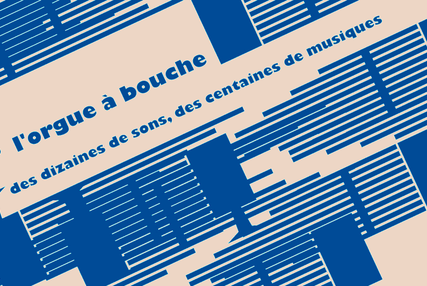14h30- 17h30
Entrée libre, dans la limite des places disponibles
Également retransmis en direct sur la chaine YouTube de l'Ircam
Sheng! L'orgue à bouche - séminaire 17
Shô, shô basse et sheng alto dans Anâhata (1986) de Jean-Claude Eloy
avec Véronique Brindeau (Inalco)
Anahâta – « Vibration primordiale » – est une fresque électronique composée entre 1984 et 1986 par Jean-Claude Eloy. Conçue comme un triptyque, l’œuvre associe une partition électronique à deux voix solistes de moines bouddhistes, des instruments de percussion et les instruments à vent de la musique de cour gagaku : flûte traversière ryûteki, hautbois hichiriki et orgue à bouche shô, ce dernier formant le pivot de la troisième partie sous-titrée Nimîlana-Unmîlana (« Ce qui s’ouvre - ce qui se replie »). C’est cette partie, faisant aussi appel au ô shô ainsi qu’au sheng-alto qui sera analysée. Comme nombre de ses autres œuvres pour électronique et voix ou instruments d’origine orientale, il s’agit pour le compositeur, qui s’est toujours senti concerné par le tempo lent et fluctuant du gagaku et par le chant glissé à hauteurs indéterminées du chant bouddhique shômyô, d’« élargir ses racines culturelles » – tout en élargissant la palette traditionnelle du gagaku par l’adjonction du ô hichiriki (quarte inférieure du hichiriki) et du ô shô (octave inférieure du shô). Ainsi qu’il l’écrit : « De cette dialectique entre ces deux grandes sources ("l’orientale" et "l’occidentale") est née toute ma démarche de compositeur ».
Sho, Gagaku and modern harmony in Yoritsune Matsudaira (1907-2001) - interpolarity between harmony and timbre
avec Mikako Mizuno 水野 みか子 (Nagoya City University)
Yoritsune Matsudaira (1907-2001) est le premier compositeur japonais à avoir combiné des instruments occidentaux avec l'harmonie gagaku et à avoir cristallisé son écriture sonore personnelle. Thème et variations pour piano et orchestre (1951) montre une approche très particulière de la technique du dodécaphonisme et le style de la pièce est loin de l'harmonie atonale. Elle simule partiellement l'harmonie d'Aitake en tant que cluster. Matsudaira pensait que le son gagaku était différent de l'harmonie gagaku et du timbre instrumental du gagaku. Matsudaira utilisait souvent six violons pour le son d'Aitake à ses débuts mais n'avait jamais utilisé le sho lui-même avant les années 1990. Matsudaira a souvent affirmé qu'il n'utilisait pas d'instruments japonais comme le sho ou le koto parce que leur timbre évoque inévitablement la culture et l'esthétique japonaises.
Pour Matsudaira, le gagaku n'est pas une contrepartie à simuler mais un monde métaphysique à poursuivre à travers des expériences musicales. La rencontre avec le style de chant de Yumi Nara, avec beaucoup de portamento, a déclenché une nouvelle phase de la composition de Matsudaira. Genji Mnogatari, mono-opéra dédié à Yumi Nara, a été créé en 1995 à Fukui. Sur la scène, cinq tableaux modernes de Toshimitsu Imai ont été présentés tour à tour. Il y avait une soprano, deux shō (dont l'un est U) et So, ce qui est un cas très rare dans les compositions de Matsudaira.



